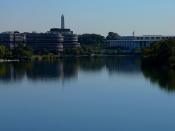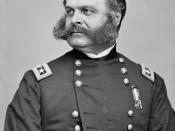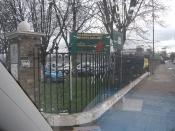It all started Wednesday, September 3, 1862, four days after General Robert E. Lee's Confederate victory at the second Battle of Bull Run. Lee dispatched a letter to southern president Jefferson Davis. In this letter Lee announced his intention to carry the war onto enemy soil for the first time in the Eastern Theater. Lee hoped that a great confederate victory would encourage England and France to help the south win the war and he hoped that invading the north would make the Federals ask for peace. Lee wrote this letter from headquarters at Chantilly, Virginia where his troops were resting. Chantilly is less than 25 miles from Washington. Lee was tempted to strike directly at Washington, but even a daring general knew such an attack would be foredoomed. Lee considered two other courses of action, withdrawal to the south behind Rappahannock River and rest, or remain in Virginia and attack.
By invading Maryland, Lee could reach immediate military objectives. He could harass the enemy on their own turf and his troops would have plenty of food. In addition, many Marylanders were pro-confederate so Lee hoped to capitalize on growing opposition of war in the North. (Bailey, 12-14).
On the morning of Wednesday September 3, 1862, General Lee broke camp and directed his columns toward the shallow fords of the Potomac River, just above Leesburg, Virginia. It was 25 miles north of Chantilly. Lee chose this spot because it was just east of the Blue Ridge Mountains and 30 miles upriver from Washington. The Federals then would surely respond by massing their forces on the north side of the Potomac River, they would think that Lee's movements were a direct threat to Baltimore and/or Washington. This would serve to remove enemy pressure from Lee's supply line through Manassas Junction...


